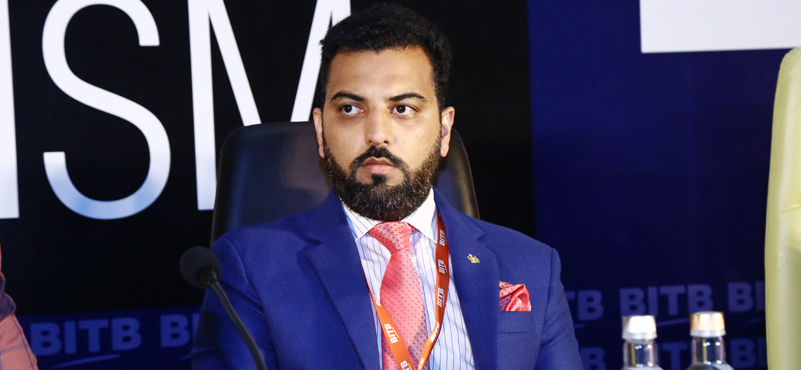The revised policy paper has its major thrust in improving regional connectivity. But it hasn’t delivered clear answers on pertinent issues like foreign flying rights for Indian carriers and reduction in ATF prices.

Civil Aviation Minister
On 30th October, the Ministry of Civil Aviation (MoCA) partially lifted the curtains on its much-awaited new civil aviation policy taking the aviation stakeholders a bit closer to the full view point. In a full-fledged presentation made before the media, the top brass of the ministry led by Civil Aviation Minister Gajapathi Raju released the Revised Draft National Civil Aviation Policy (NCAP 2015) asking for the final feedback from all concerned stakeholders in next six weeks before it is sent for the cabinet ratification in December for the final clearance.
“India has the potential to be among the global top three nations in terms of domestic and international passenger traffic. It has an ideal geographic location between the eastern and western hemisphere; a 300 million strong middle class and a rapidly growing economy. Despite these advantages, the Indian aviation sector has not witnessed the level of growth it should have and at present it is ranked 10th in the world,” the draft policy paper earmarks the crux of the new prescription in these words. The policy has suggested measures for as many as 22 segments linked to the aviation business ranging from safety, to bilateral rights, to Route Dispersal Guidelines (RDG) and also charter operations, just to cite a few.
The major thrust of the policy, of course, is on revving up the regional connectivity segment making aviation growth in India all- encompassing rather than being restricted to a few centers’ play. And for this, it has also suggested a sound fiscal support mechanism. Indian aviation stakeholders have been repeatedly pointing out at regional connectivity as the next big frontier for the structural growth of country’s aviation business. And the draft policy seems to have adequately responded to this key challenge. It has provisioned for a specific Regional Connectivity Scheme (RCS) which will come into the effect from the beginning of the next fiscal (1st April, 2016). The policy stipulates fixing an air fare bracket (`2500 for a less than an hour flight) to make aviation services more affordable for the potential travellers in the regional markets. In the past, irregular pricing pattern (mostly in the range which is not believed to be suitable to the pockets of regional travellers) has been cited as one of the key reasons for regional aviation not exactly taking off. Under the RCS, specific routes will be identified where the `2500 slab will be applicable. However, there is a serious rider with the scheme – RCS benefits will be available to only those routes where a serious adjustment in oil prices will be made with the participation of the state governments. “RCS will be made operational only in those states which reduce VAT on ATF at these airports to 1% or less,” the draft paper says.
The Route Dispersal Guidelines will stay with the critical difference of more routes being included in the metro list (category 1). Going by the measures suggested in the draft paper, India will become a more open market for foreign carriers operating from a distance of over 5000 km from the Indian national capital. Furthermore, clear intentions have been expressed to further liberalise the bilateral rights regime and there will be an open sky strategy on a reciprocal basis with countries in the SAARC region. Service tax benefits have been announced for the promotion of MRO business “The MRO business of Indian carriers is alone around `5000 crore, 90% of which is currently spent outside India – in Sri Lanka, Singapore, Malaysia, UAE etc. Given our technology base, the government is keen to develop India as an MRO hub in Asia, attracting business from foreign airlines,” the paper points out.
The revised draft policy, however, has not made a clear statement on the issue of uniform lowering of the high taxation on the ATF prices – the key demand of the airlines to bring their operational costs down. Civil Aviation Minister Gajapathi Raju has been repeatedly saying from different public fora that convincing state governments is turning out to be difficult and the issue seems to remain unresolved. “We have aviation-friendly states, aviation unfriendly states and partially friendly in certain places and partially unfriendly in certain places. So we have an unusual mix. Now, the states don’t want ATF to be part of the goods and services tax (GST),” Raju said while speaking to a news channel a day after the unveiling of the revised policy. The draft paper is equally conspicuous in leaving the issue of allowing new Indian carriers to fly abroad open ended. The issue has clearly created a strong division among Indian Airlines. But on this pertinent point, the draft civil aviation policy stipulates continuation of 5/20 or its abolition and replacement by Domestic Flying Credit (DFC) system. “Domestic airlines will need to accumulate 300 DFC before commencing flights to SAARC countries and countries with territory located entirely beyond a 5000 km radius from New Delhi. They will need to accumulate 600 DFC before starting flights to the remaining parts of the world,” the paper earmarks. Interestingly, like 5/20, the idea of DFC has also received severe criticism in the past with leading aviation figure like Tony Fernandes (founder of Air Asia) equating it with the complicated Duckword Lewis rule in cricket. But going by the tone of the paper, either of the two schemes will be in place to facilitate foreign flying rights.
The stakeholders have now six weeks to respond after which the MoCA will give it final shape and send to the cabinet. And going by the preliminary response from the aviation industry and other allied businesses (read the box item: Draft Policy Elicit Mixed Response), the policy indeed needs some serious modification. But as Raju assured in that television interview, the final policy will have a comprehensive framework meant to put Indian aviation sector on a firm footing. For those who share the dream of witnessing Indian aviation business breaking into that prestigious top three global markets league by 2030 (as per an IATA projection), this could well be a period of high suspense (till final policy is implemented) for the stakes are too high now.




































